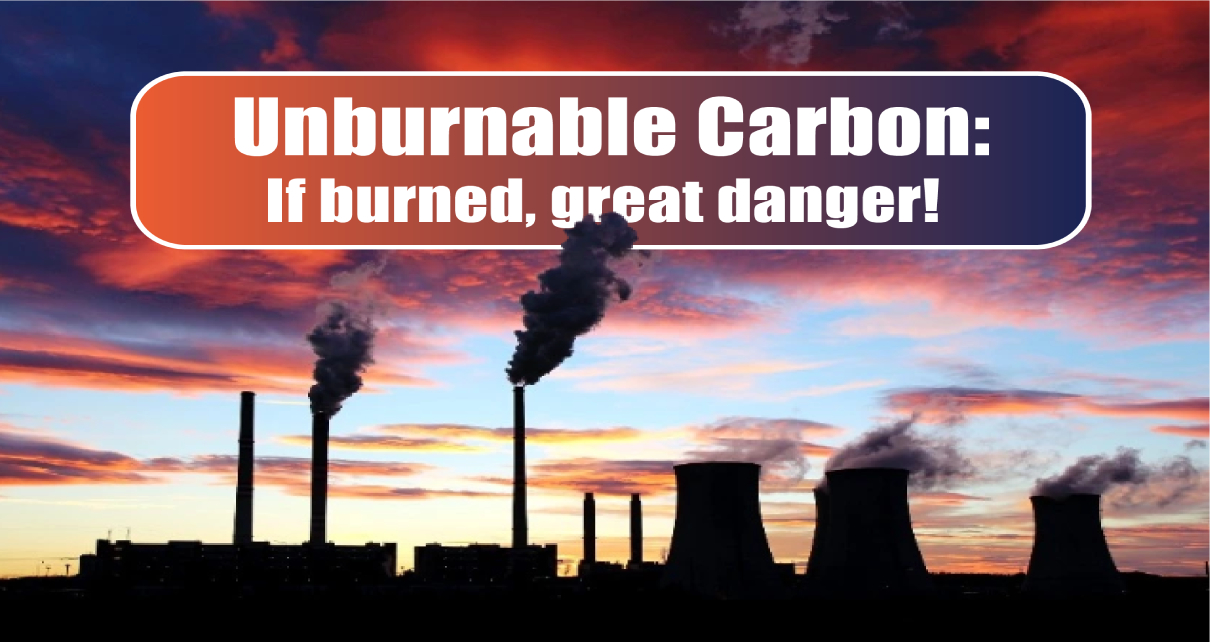
IV. Alternatives to fossil fuels
CO2 emissions
As explained before, CO2 is the leading cause of global warming and climate change. The more CO2 is present in the atmosphere; the more damaging the effect will be. Since the Industrial Revolution happened in the 18 th Century, CO2 has grown by leaps and bounds. Fig. 4.1.1 shows the global emissions growth from the mid-18 th Century through to today.
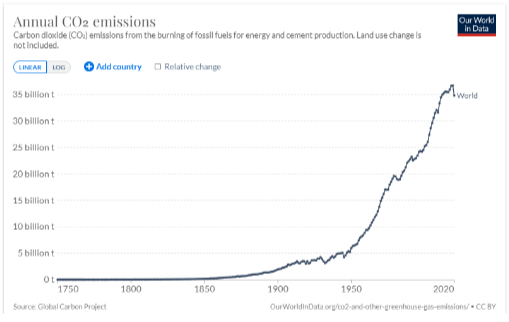
As seen from Fig. 4.1.1, it can be appreciated that prior to the Industrial Revolution, the carbon emissions were insignificant, almost zero until 1850. Then, emissions started growing, but it was still relatively slow until the mid-20th Century. By 1950, the world’s CO2 emissions reached 6 billion tonnes, and by 1990, the emissions almost quadrupled, reaching more than 22 billion tonnes.
Most of these CO2 emissions that the world emits yearly come from fossil fuels. Fig. 4.1.2 shows the global CO2 emissions from fossil fuels and land-use change from the mid-19 th Century through to today.
Fig 4.1.3. shows annual CO2 emissions coming from fossil fuels by region from the mid-28th Century through to today.
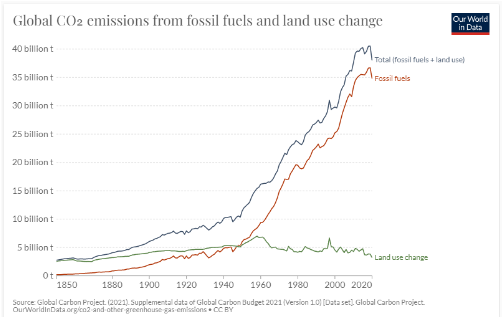
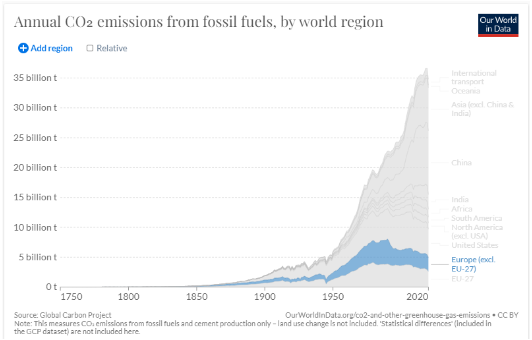
As seen from Fig. 4.1.3, until the 20th Century, Europe and the U.S. were the largest emitting regions of the total global CO2 emissions, emitting more than 85% of global emissions in 1950. However, this has changed over time. From the second half of the 20th Century, it can be appreciated that CO2 emissions particularly have significantly increased in the rest of the world, especially in Asia, and most notable in China.
The numbers shown in the graphs above are terrifying. Thus, alternative technologies for energy production without any pollution are being developed, such as CCS and renewable energy.
CCS technology
Carbon capture and storage (CCS) technology is believed to be one of the solutions for achieving net-zero goals imposed by the Paris Agreement. It can also reduce CO2 emissions that have been released from the energy sector into the atmosphere around the world.
This technology involves capturing CO2 produced by industrial plants, compressing it for transportation, and then injecting it deep underground – at least 800 meters below the surface – into a carefully selected and safe geological storage site, where it is trapped and permanently stored in porous rock (Global CCS Institute, 2021). This process can be seen in Fig. 4.2.1.
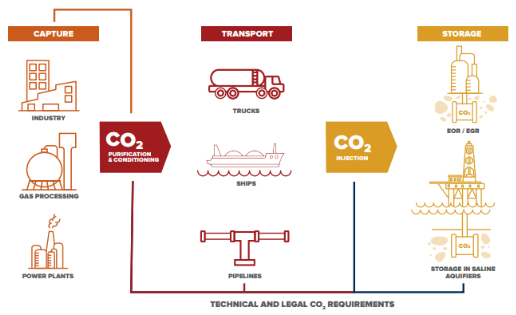
The cost of capture is primarily a function of the properties of flue gas streams (Shubham Das, 2016). It generally decreases with low temperatures and larger concentrations. The total cost of CCS varies from project to project and depends on the following factors (Global CCS Institute, 2021):
- CO2 capture at the emission source – purifying CO2 from a gas stream up to over 95% purity by volume
- CO2 dehydration and compression/liquefaction, depending on the transport method
- CO2 transport – by pipeline, ship, or mobile vehicle
- CO2 injection and monitoring and verification of stored CO2
When capturing CO2, it is essential to remove water from CO2. Otherwise, they can jointly cause corrosion of the pipelines. This process can be done by compressing or refrigerating CO2.
There are two methods to transport vast amounts of CO2. One of them is compressing it to a dense phase for transportation through pipelines. The second method is refrigerating CO2 to the liquid phase for transportation by ship or other vehicles.
Fig. 4.2.2 shows carbon capture costs in various power and industrial processes, excluding downstream CO2 compression. Moreover, Fig. 4.2.3 illustrates indicative costs only for each part of the value chain assuming construction on the U.S. Gulf Coast.
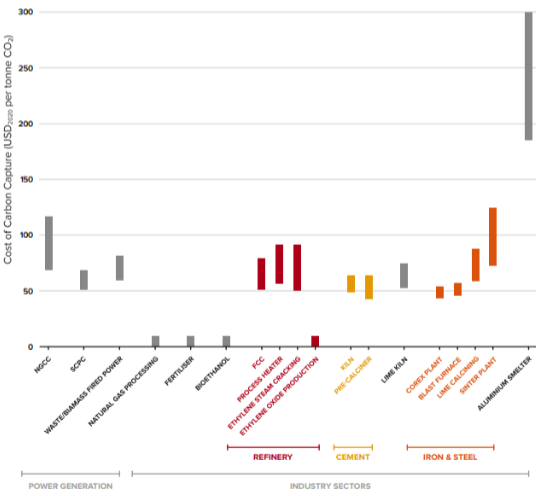
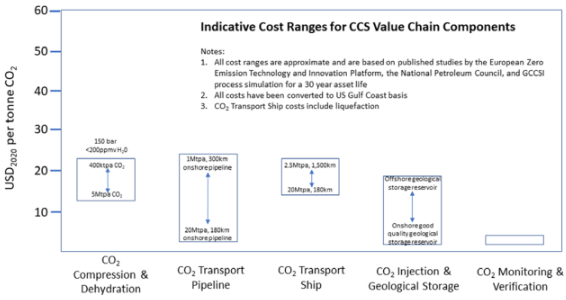
Renewable energy
The other alternative solution for CO2 emission reduction is renewable energy. Renewable energy is a clean type of energy which comes from natural sources (Natural Resources Defense Council NRDC, 2018), such as sun, wind, water or biomass (Selectra Climate Consulting, 2022).
In contrast to fuel energy, renewable energy can be replenished within human lifetime. At world’s current energy consumption rate, oil, natural gas, and coal may be depleted in 50, 60, and 110 years respectively (Selectra Climate Consulting, 2022).
Due to the urgent demand to comply with the 2% limit according to the Paris agreement, the need arose to replace fossil fuels with a cleaner and environmentally friendly type of energy, such as renewable energy sources, which can supply two-thirds of the total global energy demand. The change from fossil fuel energy to renewable is commonly known as energy transition (Dolf Gielen et al., 2019).
Although this energy transition is still in its early stage, more countries worldwide are opting for this technology to decrease the drastic increase of greenhouse gases caused by the fossil fuels. Governments around the world are consistently changing their renewable energy targets (Dolf Gielen et al., 2019).
For example, the European Union has adjusted its target by 2030 of 27% that was set in 2014 to 32% in June 2018. India has set the target of 175 GW by this year which includes 60 GW of wind, 100 GW of solar energy, 10 GW of biomass, and 5GW of small hydropower energy (Sustainable Development GOALS, 2021). The U.K. government set a target of net-zero emissions by 2050, aiming to reduce the greenhouse gas emissions by 100% in comparison to 1990 levels (Selectra Climate Consulting, 2022).
To have an idea how harmful the fossil fuels are for the living being in the planet, in Fig. 4.3.1., a comparison of CO2 emissions between renewable (such as geothermal, hydropower) and fossil energy (such as oil, natural gas) is shown.
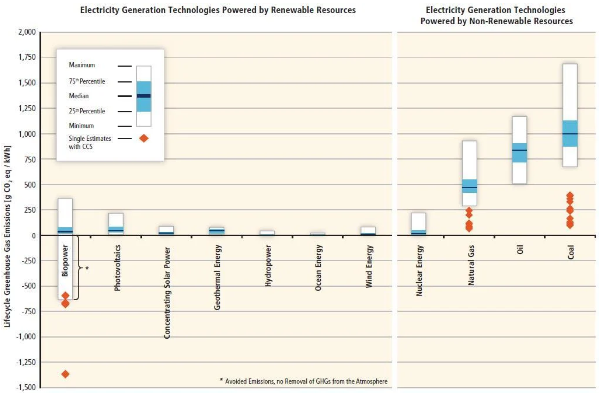
From Fig. 4.3.1., it can be noticed that burning fossil fuels, natural gas releases between 0.6 to 2 pounds of CO2E/kWh, coal emits between 1.4 and 3.6 pounds of CO2E/kWh. Nevertheless, from renewable energy, wind, solar, geothermal, and hydroelectric are responsible only for CO2 emissions between 0.02-0.04, 0.07-0.2, 0.1-0.2, and 0.1-0.5 pounds of CO2E/kWh on a life-cycle basis, respectively (Union of Concerned Scientists, 2017).
Views: 1
Notifications
Receive the new articles in your email








